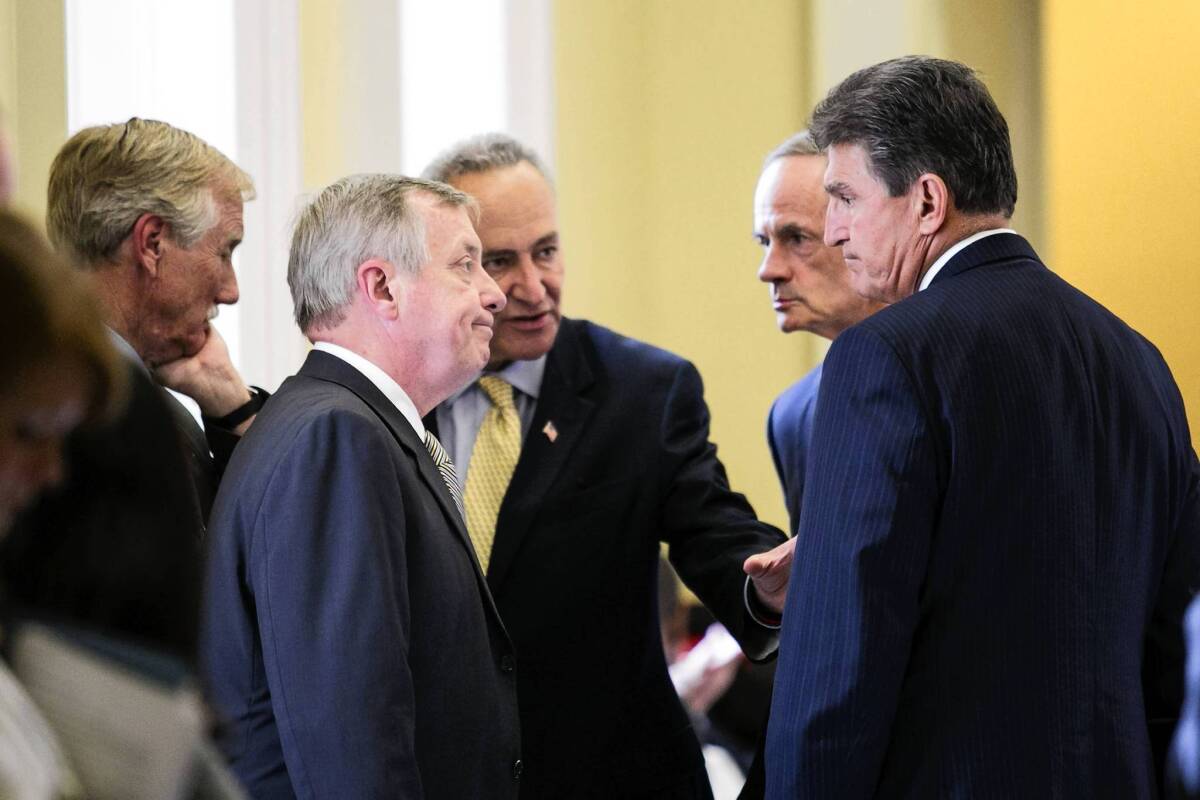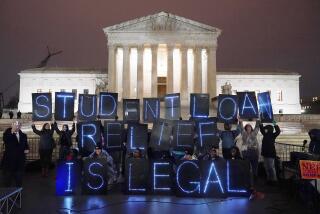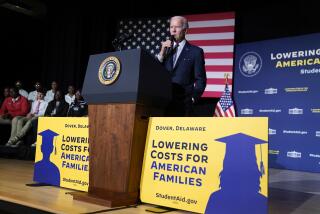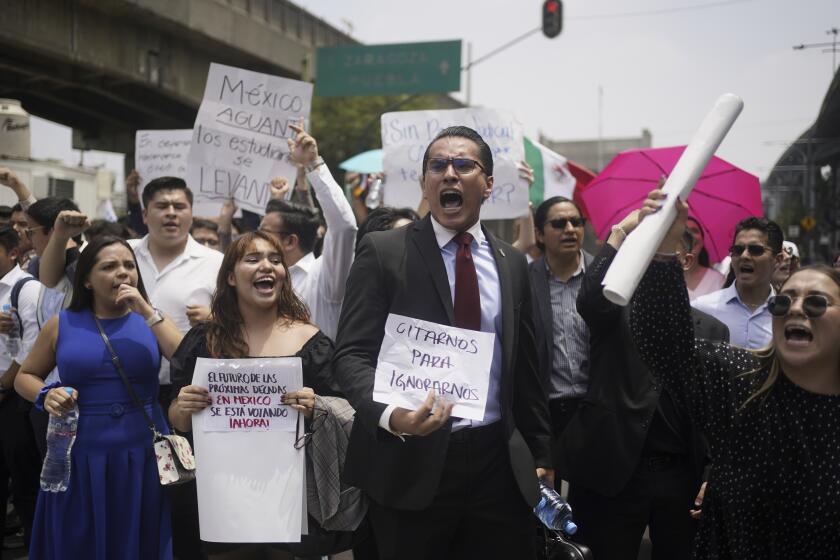Plan to reverse student loan interest rate hike blocked in Senate

By Michael A. Memoli
WASHINGTON — Senate Democrats failed again Wednesday to pass their plan to lower the interest rate for some college loans, forcing lawmakers to choose between adopting another plan many consider burdensome for students or leaving the current higher rates temporarily in effect, to their own political detriment.
A bloc of Republicans — joined by Sens. Joe Manchin III (D-W.Va.) and Angus King (I-Me.) — voted against a procedural step that would have cleared the way for the Senate to approve a plan to reinstate lower interest rates on subsidized Stafford loans for one year.
An identical plan to maintain the 3.4% rate also fell short more than a month ago, but Democrats wanted to try again after the rate doubled to 6.8% June 30.
One year after President Obama successfully rallied young supporters to pressure Congress to enact a similar extension, Democratic leaders are finding the politics complicated by the White House’s proposal, which would tie the interest rate to the market.
House Republicans adopted a similar approach in a student loan bill they passed in May.
House Speaker John A. Boehner (R-Ohio) said the Senate vote showed Democrats were “content to leave students and their families with higher borrowing costs.” He called on Obama to “address the divisions within his own party.”
The White House said it supported the Senate Democrats’ plan to enact a temporary fix.
But the administration’s initial proposal called for linking student loan rates to the 10-year Treasury rate, with different surcharges for subsidized and unsubsidized Stafford loans and PLUS graduate loans.
With bond rates likely to rise as the economy improves, however, Democrats warned that returning to a market-based plan for calculating student loan interest, as was done until 2006, would almost certainly lead to rates higher than the 6.8% that students would face this fall without congressional action.
Congress will take up the reauthorization of the Higher Education Act later this year, and Senate Democrats argued that the loan issue should be part of a comprehensive overview of federal aid programs for higher education, including Pell grants.
But without sufficient support for that approach, Senate leaders signaled they would work with a bipartisan group led by Manchin, King and Sen. Lamar Alexander (R-Tenn.) to adapt their proposal in a way that would provide protections for students against high rates.
Senate Majority Leader Harry Reid (D-Nev.) said Wednesday that negotiations were advancing on what he called an “imperfect” solution. But, he said, “it will be a way for us to move forward.”
Manchin said talks were in a “very productive mode” and Wednesday’s vote would focus them. Sen. Richard M. Burr (R-N.C.), another key negotiator, said the Congressional Budget Office was reviewing variations of a plan that had emerged from new talks. A revised plan could come to a vote within a week if all sides can agree on a final proposal.
But Democratic aides said the talks were tentative at best, with many in the caucus believing that leaving rates at 6.8% might be preferable to a plan that would eventually lead to higher rates.
At a time when Congress is under pressure to limit spending, the loan issue invited a debate over whether student borrowing should be a moneymaker for the federal government. Some of the market-based proposals would bring in hundreds of millions in new revenue at the expense of lower- and middle-class students. The House Republican plan, for instance, would generate $4.7 billion over 10 years.
A report from the Joint Economic Committee concluded that the higher rate for Stafford loans, which accounted for more than a third of all student borrowing in the 2011-12 academic year, would add $4,500 to the cost of a four-year degree for students who borrowed the maximum amount.
King contended that continuing with an arbitrary rate also posed risks to students.
“If Congress tries to set a rate, it will always be wrong,” King said, noting that even the recent 3.4% rate was higher than what a market rate would have been.
The plan passed by the House has slightly higher surcharges than Obama initially proposed, but set an overall cap of 8.5% to protect student borrowers against significant rate increases. Under the president’s plan, rates would be locked in for the life of a loan; under the House plan, they would reset each year.
Any compromise plan would probably bridge the differences between the two. Democrats continue to insist on a cap that would limit the revenue generated by student loan programs.
“The search now is for some kind of cap or protection on the upside,” King said, and the objective is to “allow lower rates generally for students in the long run.”
More to Read
Sign up for Essential California
The most important California stories and recommendations in your inbox every morning.
You may occasionally receive promotional content from the Los Angeles Times.









